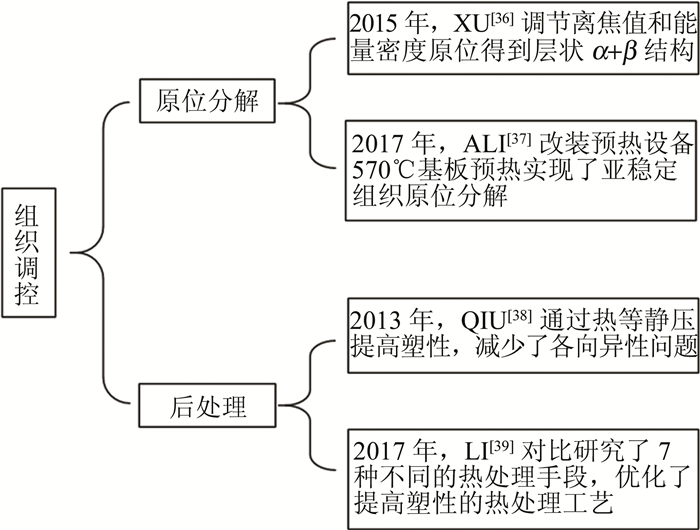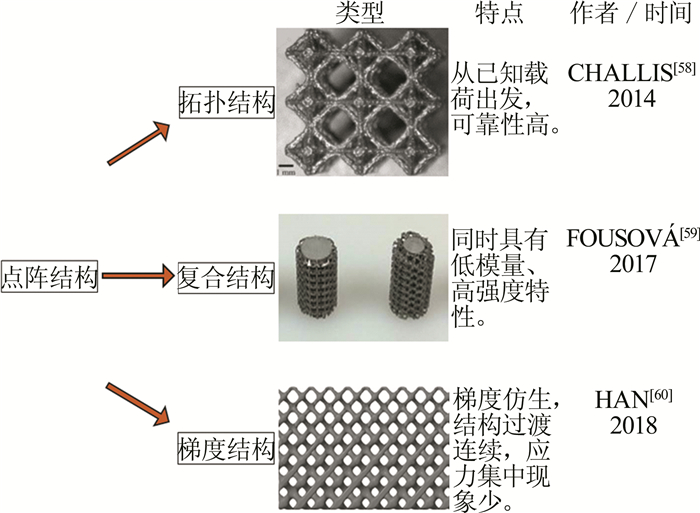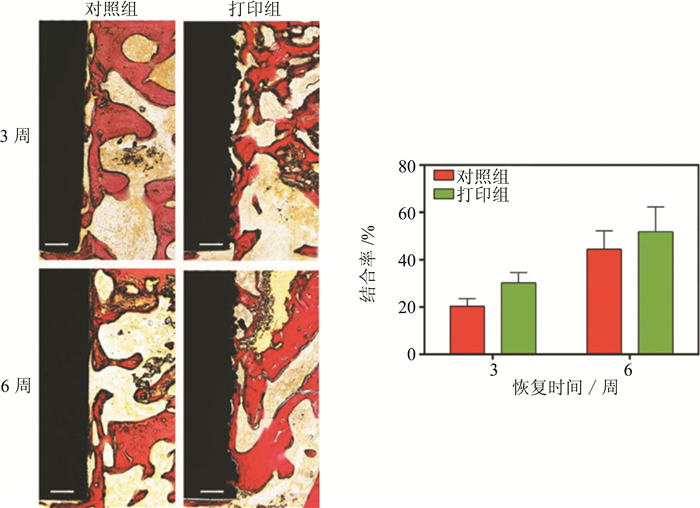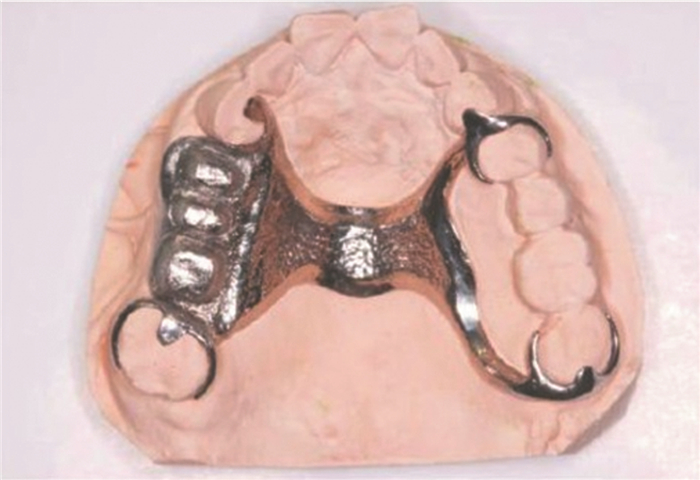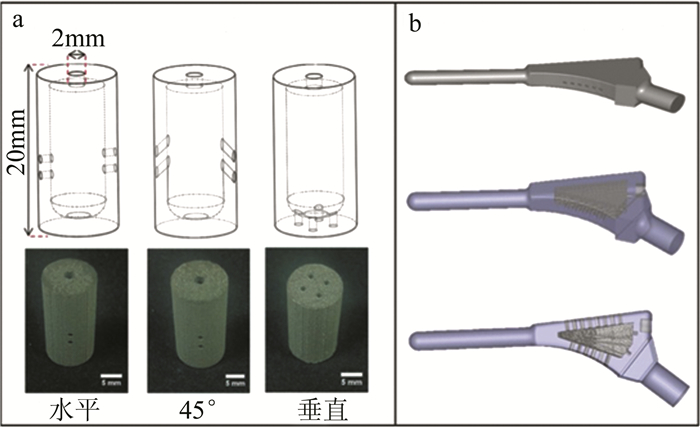|
[1]
|
GEETHA M, SINGH A K, ASOKAMANI R, et al. Ti based biomaterials, the ultimate choice for orthopaedic implants-A review[J]. Progress in Materials Science, 2009, 54(3): 397-425. doi: 10.1016/j.pmatsci.2008.06.004 |
|
[2]
|
ZHOU B, ZHOU J, LI H, et al. A study of the microstructures and mechanical properties of Ti6Al4V fabricated by SLM under vacuum[J]. Materials Science and Engineering, 2018, A724: 1-10. |
|
[3]
|
THIJS L, VERHAEGHE F, CRAEGHS T, et al. A study of the microstructural evolution during selective laser melting of Ti-6Al-4V[J]. Acta Materialia, 2010, 58(9): 3303-3312. doi: 10.1016/j.actamat.2010.02.004 |
|
[4]
|
BARTOLOMEU F, FARIA S, CARVALHO O, et al. Predictive models for physical and mechanical properties of Ti6Al4V produced by selective laser melting[J]. Materials Science and Engineering, 2016, A663: 181-192. |
|
[5]
|
SHI X, MA S, LIU C, et al. Performance of high layer thickness in selective laser melting of Ti-6Al-4V[J]. Materials (Basel, Switzerland), 2016, 9(12): 975-990. doi: 10.3390/ma9120975 |
|
[6]
|
SHI W, LIU Y, SHI X, et al. Beam diameter dependence of performance in thick-layer and high-power selective laser melting of Ti-6Al-4V[J]. Materials, 2018, 11(7): 1237-1254. doi: 10.3390/ma11071237 |
|
[7]
|
HAN J, YANG J J, YU H, et al. Microstructure and mechanical property of selective laser melted Ti6Al4V dependence on laser energy density[J]. Rapid Prototyping Journal, 2017, 23(2): 217-226. doi: 10.1108/RPJ-12-2015-0193 |
|
[8]
|
KASPEROVICH G, HAUSMANN J. Improvement of fatigue resistance and ductility of TiAl6V4 processed by selective laser melting[J]. Journal of Materials Processing Technology, 2015, 220: 202-214. doi: 10.1016/j.jmatprotec.2015.01.025 |
|
[9]
|
ZHANG Q, LIANG Z, CAO M, et al. Microstructure and mechanical properties of Ti6Al4V alloy prepared by selective laser melting combined with precision forging[J]. Transactions of Nonferrous Metals Society of China, 2017, 27(5): 1036-1042. doi: 10.1016/S1003-6326(17)60121-3 |
|
[10]
|
THÖNE M, LEUDERS S, RIEMER A, et al. Influence of heat-treatment on selective laser melting products-e.g.Ti-6Al-4V[C]//Proceedings of the 23rd Annual International Solid Freeform Fabrication Symposium : An Additive Manufacturing Conference. Austin, USA: University of Texas, 2012: 492-496. |
|
[11]
|
HUSSEIN A, HAO L, YAN C, et al. Advanced lattice support structures for metal additive manufacturing[J]. Journal of Materials Processing Technology, 2013, 213(7): 1019-1026. doi: 10.1016/j.jmatprotec.2013.01.020 |
|
[12]
|
VRANCKEN B, BULS S, KRUTH J P. Preheating of selective laser melted Ti-6Al-4V: Microstructure and mechanical properties[C]// Proceedings of the 13th World Conference on Titanium. San Diego, USA: The Minerals, Metals & Materials Society, 2016: 1269-1277. |
|
[13]
|
LIU Y, YANG Y, WANG D. A study on the residual stress during selective laser melting (SLM) of metallic powder[J]. The International Journal of Advanced Manufacturing Technology, 2016, 87(1): 647-656. |
|
[14]
|
CHENG B, SHRESTHA S, CHOU K. Stress and deformation evaluations of scanning strategy effect in selective laser melting[J]. Additive Manufacturing, 2016, 12: 240-251. doi: 10.1016/j.addma.2016.05.007 |
|
[15]
|
MISHUROVA T, CABEZA S, ARTZT K, et al. An assessment of subsurface residual stress analysis in SLM Ti-6Al-4V[J]. Materials, 2017, 10(4): 348-362. doi: 10.3390/ma10040348 |
|
[16]
|
PARRY L A, ASHCROFT I A, WILDMAN R D. Geometrical effects on residual stress in selective laser melting[J]. Additive Manufacturing, 2019, 25: 166-175. doi: 10.1016/j.addma.2018.09.026 |
|
[17]
|
SUN D, GU D, LIN K, et al. Selective laser melting of titanium parts: Influence of laser process parameters on macro- and microstructures and tensile property[J]. Powder Technology, 2019, 342: 371-379. doi: 10.1016/j.powtec.2018.09.090 |
|
[18]
|
LIU Y J, LI X P, ZHANG L C, et al. Processing and properties of topologically optimised biomedical Ti-24Nb-4Zr-8Sn scaffolds manufactured by selective laser melting[J]. Materials Science and Engineering, 2015, A642: 268-278. |
|
[19]
|
WANG X L. Study on process optimization and property of titanium alloy manufactured by selective laser melting[D].Guangzhou: South China University of Technology, 2016: 60-65(in Chinese). |
|
[20]
|
van BAEL S, KERCKHOFS G, MOESEN M, et al. Micro-CT-based improvement of geometrical and mechanical controllability of selective laser melted Ti6Al4V porous structures[J]. Materials Science and Engineering, 2011, A528(24): 7423-7431. |
|
[21]
|
CHAN K S, KOIKE M, MASON R L, et al. Fatigue life of titanium alloys fabricated by additive layer manufacturing techniques for den-tal implants[J]. Metallurgical and Materials Transactions, 2013, A44(2): 1010-1022. |
|
[22]
|
DO D K, LI P. The effect of laser energy input on the microstructure, physical and mechanical properties of Ti-6Al-4V alloys by selective laser melting[J]. Virtual and Physical Prototyping, 2016, 11(1): 41-47. doi: 10.1080/17452759.2016.1142215 |
|
[23]
|
WYCISK E, EMMELMANN C, SIDDIQUE S, et al. High cycle fatigue (HCF) performance of Ti-6Al-4V alloy processed by selective laser melting[J]. Advanced Materials Research, 2013, 816/817: 134-139. doi: 10.4028/www.scientific.net/AMR.816-817.134 |
|
[24]
|
CHEN C, HAO Y, BAI X, et al. 3-D printed porous Ti6Al4V cage: Effects of additive angle on surface properties and biocompatibility; bone ingrowth in Beagle tibia model[J]. Materials & Design, 2019, 175: 107824. |
|
[25]
|
WANG Z, XIAO Z, TSE Y, et al. Optimization of processing parameters and establishment of a relationship between microstructure and mechanical properties of SLM titanium alloy[J]. Optics & Laser Technology, 2019, 112: 159-167. |
|
[26]
|
GE Y N, WU M P, MAO Y Y, et al. Effect of scanning strategy on forming precision of titanium alloy by selective laser melting [J]. Laser & Optoelectronics Progress, 2018, 55(9): 091403(in Chin-ese). |
|
[27]
|
YASA E, DECKERS J. The investigation of the influence of laser remelting on density, surface quality and microstructure of selective laser melting parts[J]. Rapid Prototyping Journal, 2011, 17(5): 312-327. doi: 10.1108/13552541111156450 |
|
[28]
|
LIU J H, ZHU H H, HU Zh H, et al. Control of elevated edge in selective laser melt molding[J]. Chinese Journal of Lasers, 2017, 44(12): 1202007(in Chinese). doi: 10.3788/CJL201744.1202007 |
|
[29]
|
DECKERS J, YASA E, KRUTH J P. The investigation of the influence of laser re-melting on density, surface quality and microstructure of selective laser melting parts[J]. Rapid Prototyping Journal, 2011, 17(5): 312-327. doi: 10.1108/13552541111156450 |
|
[30]
|
VAITHILINGAM J, GOODRIDGE R D, HAGUE R J M, et al. The effect of laser remelting on the surface chemistry of Ti6al4V components fabricated by selective laser melting[J]. Journal of Materials Processing Technology, 2016, 232: 1-8. doi: 10.1016/j.jmatprotec.2016.01.022 |
|
[31]
|
VILARO T, COLIN C, BARTOUT J D. As-fabricated and heat-treated microstructures of the Ti-6Al-4V alloy processed by selective laser melting[J]. Metallurgical and Materials Transactions, 2011, A42(10): 3190-3199. |
|
[32]
|
KHORASANI A, GIBSON I, GOLDBERG M, et al. On the role of different annealing heat treatments on mechanical properties and microstructure of selective laser melted and conventional wrought Ti-6Al-4V[J]. Rapid Prototyping Journal, 2017, 23(2): 295-304. doi: 10.1108/RPJ-02-2016-0022 |
|
[33]
|
CAIN V, THIJS L, VAN HUMBEECK J, et al. Crack propagation and fracture toughness of Ti6Al4V alloy produced by selective laser melting[J]. Additive Manufacturing, 2015, 5: 68-76. doi: 10.1016/j.addma.2014.12.006 |
|
[34]
|
SHUNMUGAVEL M, POLISHETTY A, LITTLEFAIR G. Microstructure and mechanical properties of wrought and additive manufactured Ti-6Al-4V cylindrical bars[J]. Procedia Technology, 2015, 20: 231-236. doi: 10.1016/j.protcy.2015.07.037 |
|
[35]
|
SIMONELLI M, TSE Y Y, TUCK C. Effect of the build orientation on the mechanical properties and fracture modes of SLM Ti-6Al-4V[J]. Materials Science and Engineering, 2014, A616: 1-11. |
|
[36]
|
XU W, SUN S, ELAMBASSERIL J, et al. Ti-6Al-4V additively manufactured by selective laser melting with superior mechanical properties[J]. JOM, 2015, 67(3): 668-673. doi: 10.1007/s11837-015-1297-8 |
|
[37]
|
ALI H, MA L, GHADBEIGI H, et al. In-situ residual stress reduction, martensitic decomposition and mechanical properties enhancement through high temperature powder bed pre-heating of selective laser melted Ti-6Al-4V[J]. Materials Science and Engineering, 2017, A695: 211-220. |
|
[38]
|
QIU C, ADKINS N J E, ATTALLAH M M. Microstructure and tensile properties of selectively laser-melted and of HIPed laser-melted Ti-6Al-4V[J]. Materials Science and Engineering, 2013, A578: 230-239. |
|
[39]
|
LI W X, YI D Q, LIU H Q, et al. Effect of the heat treatment process on microstructure and mechanical properties of the TC4 alloy processed by selective laser melting [J]. Materials Science and Engineering of Powder Metallurgy, 2017, 22(1): 70-78(in Chinse). |
|
[40]
|
ROOHANI-ESFAHANI S, NEWMAN P, ZREIQAT H. Design and fabrication of 3-D printed scaffolds with a mechanical strength comparable to cortical bone to repair large bone defects[J]. Scientific Reports, 2016, 6: 19468. doi: 10.1038/srep19468 |
|
[41]
|
SHIBATA Y, TANIMOTO Y, MARUYAMA N, et al. A review of improved fixation methods for dental implants. Part Ⅱ: Biomechanical integrity at bone-implant interface[J]. Journal of Prosthodontic Research, 2015, 59(2): 84-95. doi: 10.1016/j.jpor.2015.01.003 |
|
[42]
|
KELLY A, HIDEO N. Metallic scaffolds for bone regeneration[J]. Materials, 2009, 2(3):790-832. doi: 10.3390/ma2030790 |
|
[43]
|
MARIN E, FUSI S, PRESSACCO M, et al. Characterization of ce-llular solids in Ti6Al4V for orthopaedic implant applications: Trabecular titanium[J].Journal of the Mechanical Behavior of Biome-dical Materials, 2010, 3(5): 373-381. doi: 10.1016/j.jmbbm.2010.02.001 |
|
[44]
|
BARTOLOMEU F, COSTA M M, GOMES J R, et al. Implant surface design for improved implant stability-A study on Ti6Al4V dense and cellular structures produced by selective laser melting[J]. Tribology International, 2019, 129: 272-282. doi: 10.1016/j.triboint.2018.08.012 |
|
[45]
|
WANG Y, SHEN Y, WANG Z, et al. Development of highly porous titanium scaffolds by selective laser melting[J]. Materials Letters, 2010, 64(6):674-676. doi: 10.1016/j.matlet.2009.12.035 |
|
[46]
|
SHENG Z, WEI Q, CHENG L, et al. Effects of scan line spacing on pore characteristics and mechanical properties of porous Ti6Al4V implants fabricated by selective laser melting[J]. Materials & Design, 2014, 63(21): 185-193. |
|
[47]
|
ZHANG X Y, FANG G, ZHOU J. Additively manufactured scaffolds for bone tissue engineering and the prediction of their mechanical behavior: A review[J]. Materials, 2017, 10(1):50-52. |
|
[48]
|
AHMADI S, YAVARI S, WAUTHLE R, et al. Additively manufactured open-cell porous biomaterials made from six different space-filling unit cells: The mechanical and morphological properties[J]. Materials, 2015, 8(4):1871-1896. doi: 10.3390/ma8041871 |
|
[49]
|
KADKHODAPOUR J, MONTAZERIAN H, DARABI A C, et al. Failure mechanisms of additively manufactured porous biomaterials: Effects of porosity and type of unit cell[J]. Journal of the Mechanical Behavior of Biomedical Materials, 2015, 50: 180-191. doi: 10.1016/j.jmbbm.2015.06.012 |
|
[50]
|
WIEDING J, JONITZ A, BADER R. The effect of structural design on mechanical properties and cellular response of additive manufactured titanium scaffolds[J]. Materials, 2012, 5(8):1336-1347. doi: 10.3390/ma5081336 |
|
[51]
|
PARTHASARATHY J, STARLY B, RAMAN S, et al. Mechanical evaluation of porous titanium (Ti6Al4V) structures with electron beam melting (EBM)[J]. Journal of the Mechanical Behavior of Biomedical Materials, 2010, 3(3): 249-259. doi: 10.1016/j.jmbbm.2009.10.006 |
|
[52]
|
WEIβMANN V, BADER R, HANSMANN H, et al. Influence of the structural orientation on the mechanical properties of selective laser melted Ti6Al4V open-porous scaffolds[J]. Materials & Design, 2016, 95: 188-197. |
|
[53]
|
HEINL P, KÖRNER C, SINGER R F. Selective electron beam melting of cellular titanium: Mechanical properties[J]. Advanced Engineering Materials, 2008, 10(9):882-888. doi: 10.1002/adem.200800137 |
|
[54]
|
CAMPOLI G, BORLEFFS M S, AMIN YAVARI S, et al. Mechanical properties of open-cell metallic biomaterials manufactured using additive manufacturing[J]. Materials & Design, 2013, 49(C):957-965. |
|
[55]
|
WAUTHLE R, JOHAN V D S, AMIN Y S, et al. Additively manufactured porous tantalum implants[J]. Acta Biomaterialia, 2015, 14:217-225. doi: 10.1016/j.actbio.2014.12.003 |
|
[56]
|
ARABNEJAD S, JOHNSTON R B, PURA J A, et al. High-strength porous biomaterials for bone replacement: A strategy to assess the interplay between cell morphology, mechanical properties, bone ingrowth and manufacturing constraints[J]. Acta Biomaterialia, 2015, 30(8):345-356. |
|
[57]
|
YAN C, HAO L, HUSSEIN A, et al. Ti-6Al-4V triply periodic minimal surface structures for bone implants fabricated via selective laser melting[J]. Journal of the Mechanical Behavior of Biomedical Materials, 2015, 51:61-73. doi: 10.1016/j.jmbbm.2015.06.024 |
|
[58]
|
CHALLIS V J, XU X, LAI C Z, et al. High specific strength and stiffness structures produced using selective laser melting[J]. Materials & Design, 2014, 63(2): 783-788. |
|
[59]
|
FOUSOVÁ M, VOJTĚCH D, KUBÁSEK J, et al. Promising characteristics of gradient porosity Ti-6Al-4V alloy prepared by SLM process[J]. Journal of the Mechanical Behavior of Biomedical Materials, 2017, 69: 368-376. doi: 10.1016/j.jmbbm.2017.01.043 |
|
[60]
|
HAN Ch J, LI Y, WANG Q, et al. Continuous functionally graded porous titanium scaffolds manufactured by selective laser melting for bone implants[J]. Journal of the Mechanical Behavior of Biomedical Materials, 2018, 80: 119-127. doi: 10.1016/j.jmbbm.2018.01.013 |
|
[61]
|
BARTOLOMEU F, SAMPAIO M, CARVALHO O, et al. Tribological behavior of Ti6Al4V cellular structures produced by selective laser melting[J]. Journal of the Mechanical Behavior of Biomedical Materials, 2017, 69: 128-134. doi: 10.1016/j.jmbbm.2017.01.004 |
|
[62]
|
CHAN K S, KOIKE M, MASON R L, et al. Fatigue life of titanium alloys fabricated by additive layer manufacturing techniques for den-tal implants[J]. Metallurgical and Materials Transactions, 2013, A44(2): 1010-1022. |
|
[63]
|
EDWARDS P, RAMULU M. Fatigue performance evaluation of selective laser melted Ti-6Al-4V[J]. Materials Science and Engineering, 2014, A598: 327-337. |
|
[64]
|
van HOOREWEDER B, APERS Y, LIETAERT K, et al. Improving the fatigue performance of porous metallic biomaterials produced by selective laser melting[J]. Acta Biomaterialia, 2017, 47: 193-202. doi: 10.1016/j.actbio.2016.10.005 |
|
[65]
|
DALLAGO M, ZANINI F, CARMIGNATO S, et al. Effect of the geometrical defectiveness on the mechanical properties of SLM biomedical Ti6Al4V lattices[J]. Procedia Structural Integrity, 2018, 13: 161-167. doi: 10.1016/j.prostr.2018.12.027 |
|
[66]
|
YADROITSEV I, KRAKHMALEV P, YADROITSAVA I, et al. Qualification of Ti6Al4V ELI alloy produced by laser powder bed fusion for biomedical applications[J]. JOM, 2018, 70(3): 372-377. doi: 10.1007/s11837-017-2655-5 |
|
[67]
|
HACKEL L, RANKIN J R, RUBENCHIK A, et al. Laser peening: A tool for additive manufacturing post-processing[J]. Additive Manufacturing, 2018, 24: 67-75. doi: 10.1016/j.addma.2018.09.013 |
|
[68]
|
LEUDERS S, THÖNE M, RIEMER A, et al. On the mechanical behaviour of titanium alloy TiAl6V4 manufactured by selective laser melting: Fatigue resistance and crack growth performance[J]. International Journal of Fatigue, 2013, 48: 300-307. doi: 10.1016/j.ijfatigue.2012.11.011 |
|
[69]
|
ZHANG H, DONG D, SU S, et al. Experimental study of effect of post processing on fracture toughness and fatigue crack growth performance of selective laser melting Ti-6Al-4V [DB/OL].(2019-01-03)[2019-09-25].https://www.sciencedirect.com/science/article/pii/S1000936119300196. |
|
[70]
|
DALLAGO M, FONTANARI V, TORRESANI E, et al. Fatigue and biological properties of Ti-6Al-4V ELI cellular structures with variously arranged cubic cells made by selective laser melting[J]. Journal of the Mechanical Behavior of Biomedical Materials, 2018, 78: 381-394. doi: 10.1016/j.jmbbm.2017.11.044 |
|
[71]
|
BENEDETTI M, FONTANARI V, BANDINI M, et al. Low- and high-cycle fatigue resistance of Ti-6Al-4V ELI additively manufactured via selective laser melting: Mean stress and defect sensitivity[J]. International Journal of Fatigue, 2018, 107: 96-109. doi: 10.1016/j.ijfatigue.2017.10.021 |
|
[72]
|
GVNTHER J, KREWERTH D, LIPPMANN T, et al. Fatigue life of additively manufactured Ti-6Al-4V in the very high cycle fatigue regime[J]. International Journal of Fatigue, 2017, 94: 236-245. doi: 10.1016/j.ijfatigue.2016.05.018 |
|
[73]
|
NICOLETTO G, MAISANO S, ANTOLOTTI M, et al. Influence of post fabrication heat treatments on the fatigue behavior of Ti-6Al-4V produced by selective laser melting[J]. Procedia Structural Integrity, 2017, 7: 133-140. doi: 10.1016/j.prostr.2017.11.070 |
|
[74]
|
ZHAO D, HUANG Y, AO Y, et al. Effect of pore geometry on the fatigue properties and cell affinity of porous titanium scaffolds fabricated by selective laser melting[J]. Journal of the Mechanical Behavior of Biomedical Materials, 2018, 88: 478-487. doi: 10.1016/j.jmbbm.2018.08.048 |
|
[75]
|
AMIN YAVARI S, AHMADI S M, WAUTHLE R, et al. Relationship between unit cell type and porosity and the fatigue behavior of selective laser melted meta-biomaterials[J]. Journal of the Mechanical Behavior of Biomedical Materials, 2015, 43: 91-100. doi: 10.1016/j.jmbbm.2014.12.015 |
|
[76]
|
BARTOLOMEU F, BUCIUMEANU M, PINTO E, et al. Wear behavior of Ti6Al4V biomedical alloys processed by selective laser melting, hot pressing and conventional casting[J]. Transactions of Nonferrous Metals Society of China, 2017, 27(4): 829-838. doi: 10.1016/S1003-6326(17)60060-8 |
|
[77]
|
LU Y Q, MEI Z Y, ZHANG Q Q, et al. Friction and wear performance test of SLM formed titanium alloy and cast titanium alloy[C]//The 12th National Conference on Prosthodontics.Beijing: Chinese Stomatological Association, 2018: 117(in Chinese). |
|
[78]
|
YE Z H. The personalized design and process research of selective laser melting manufacturing of Ti-6Al-4V tibial implant[D].Guangzhou: South China University of Technology, 2014: 68-69(in Chinese). |
|
[79]
|
DAI N, ZHANG L, ZHANG J, et al. Corrosion behavior of selective laser melted Ti-6Al-4V alloy in NaCl solution[J]. Corrosion Science, 2016, 102: 484-489. doi: 10.1016/j.corsci.2015.10.041 |
|
[80]
|
CHEN L Y, HUANG J C, LIN C H, et al. Anisotropic response of Ti-6Al-4V alloy fabricated by 3-D printing selective laser melting[J]. Materials Science & Engineering, 2017, A682: 389-395. |
|
[81]
|
ZHAO B, WANG H, QIAO N, et al. Corrosion resistance characteristics of a Ti-6Al-4V alloy scaffold that is fabricated by electron beam melting and selective laser melting for implantation in vivo[J]. Materials Science and Engineering, 2017, C70: 832-841. |
|
[82]
|
LONGHITANO G A, ARENAS M A, CONDE A, et al. Heat treatments effects on functionalization and corrosion behavior of Ti-6Al-4V ELI alloy made by additive manufacturing[J]. Journal of Alloys and Compounds, 2018, 765: 961-968. doi: 10.1016/j.jallcom.2018.06.319 |
|
[83]
|
TOPTAN F, ALVES A C, CARVALHO Ó, et al. Corrosion and tribocorrosion behaviour of Ti6Al4V produced by selective laser melting and hot pressing in comparison with the commercial alloy[J]. Journal of Materials Processing Technology, 2019, 266: 239-245. doi: 10.1016/j.jmatprotec.2018.11.008 |
|
[84]
|
VAITHILINGAM J, PRINA E, GOODRIDGE R D, et al. Surface chemistry of Ti6Al4V components fabricated using selective laser melting for biomedical applications[J]. Materials Science and Engineering, 2016, C67: 294-303. |
|
[85]
|
RUI M, ZHENG X, ZHANG Y Q, et al. Three-dimensional printing porous titanium alloy scaffold repairs radial bone defect in rabbits [J]. Chinese Journal of Tissue Engineering Research, 2019, 23(18): 2789-2793(in Chinese). |
|
[86]
|
ZHANG J, ZHOU W, WANG H, et al. 3D-printed surface promoting osteogenic differentiation and angiogenetic factor expression of BMSCs on Ti6Al4V implants and early osseointegration in vivo[J]. Journal of Materials Science & Technology, 2019, 35(2): 336-343. |
|
[87]
|
WANG M, WU Y, LU S, et al. Fabrication and characterization of selective laser melting printed Ti-6Al-4V alloys subjected to heat treatment for customized implants design[J]. Progress in Natural Science: Materials International, 2016, 26(6): 671-677. doi: 10.1016/j.pnsc.2016.12.006 |
|
[88]
|
NANJIXIONG. Application of domestic medical institutions in 3-D printing human implants [EB/OL].(2016-10-13)[2019-09-02].www.nanjixiong.com(in Chinese). |
|
[89]
|
LIU Y F, WANG W N, YU H, et al. Study on the fit of titanium alloy removable partial denture framework fabricated by selective laser melting[J]. Journal of Practical Stomatology, 2017, 33(3): 302-305(in Chinese). |
|
[90]
|
FU J, NI M, CHEN J Y, et al. Early clinical outcomes of individua-lized 3-D printed porous Ti6Al4V augment reconstruction in severe acetabular bone defect[J].Chinese Journal Bone and Joint Surgery, 2018, 11(6): 401-407(in Chinese). |
|
[91]
|
HASSANIN H, FINET L, COX S C, et al. Tailoring selective laser melting process for titanium drug-delivering implants with releasing micro-channels[J]. Additive Manufacturing, 2018, 20: 144-155. doi: 10.1016/j.addma.2018.01.005 |
|
[92]
|
COX S C, JAMSHIDI P, EISENSTEIN N M, et al. Adding functionality with additive manufacturing: Fabrication of titanium-based antibiotic eluting implants[J]. Materials Science and Engineering, 2016, C64: 407-415. |

 Map
Map


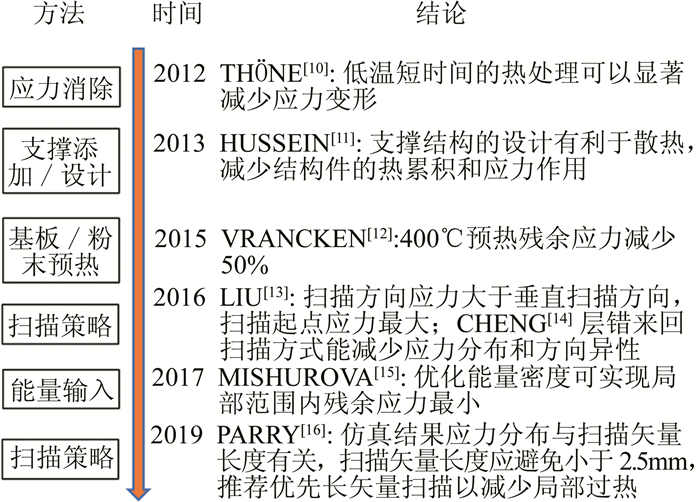

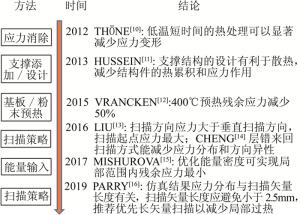
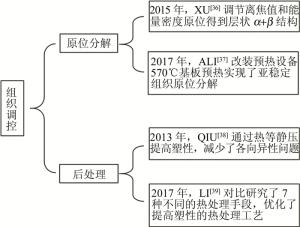


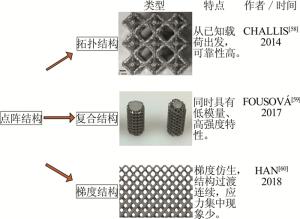
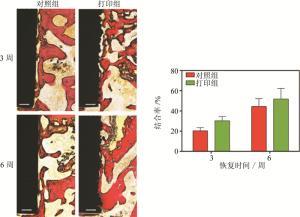
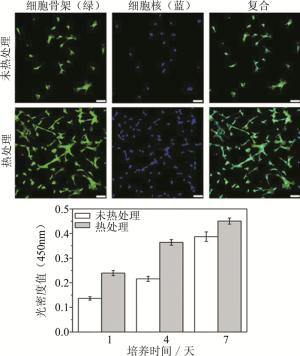



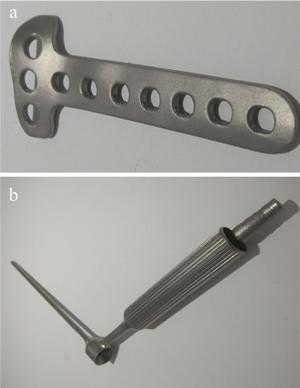
 DownLoad:
DownLoad:
